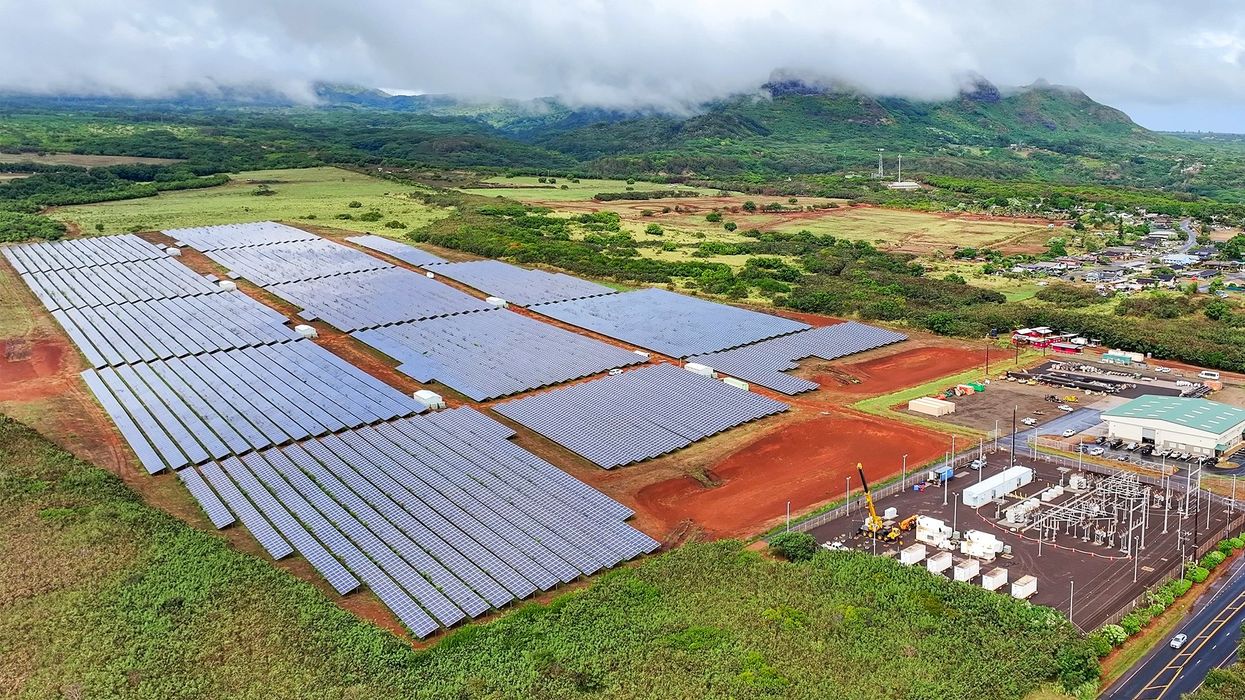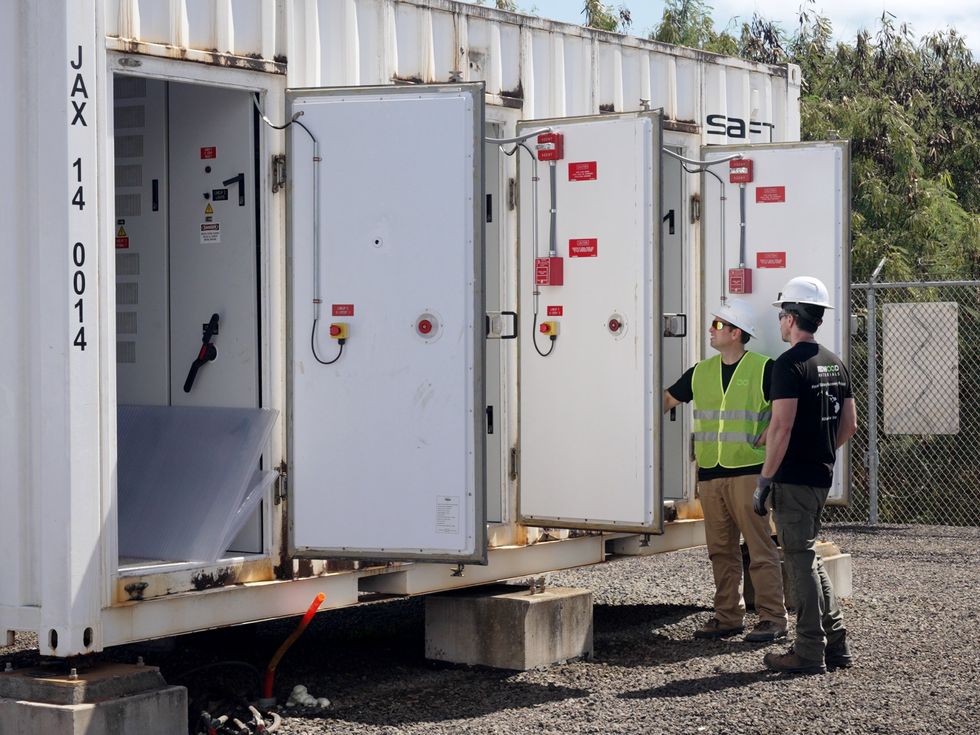Redwood Materials Will Recycle Hawaiian Grid Batteries

Lithium-ion battery recycling took a big step forward this week, as a Hawaiian utility announced it is undertaking one of the biggest examples of grid-storage recycling in North America to date.
The Kaua'i Island Utility Cooperative is working with Redwood Materials to decommission the Anahola Solar Project substation and recycle its lithium-ion batteries in order to make new batteries.
The Anahola recycling project is one of the earliest examples of stationary storage recycling. As such, it sets the stage for an expected rise in stationary battery storage recycling in the future. A Redwood Materials spokesman said that successful decommissioning of these initial projects serves as an industry model for future gigawatt-scale projects."
By electric grid standards, Anahola's 4-megawatt-hour storage facility is not big. However, its compliment of lithium-ion batteries is one of the largest to be recycled thus far. The thing to keep in mind is that the large-scale lithium-battery sector is relatively young," noted Sam Abuelsamid, the principal analyst for transportation and mobility at the market intelligence firm Guidehouse Insights. The vast majority of batteries are nowhere near end of life yet. They're not ready for recycling."
Built in 2015, the Anahola station is old enough that its batteries have reached their end of life. The station had been using the batteries to store power from 53 acres of photovoltaic panels, which was then used to power homes, businesses, and streetlights on Hawaii's Kaua'i Island. The facility's substation included eight stationary power containers made up of 2,320 lithium-ion battery modules in total. All of the lithium-ion cells employed nickel cobalt aluminum oxide chemistry (NCA). Redwood Materials would not name the original supplier of the NCA batteries, but did say it was not Tesla (Redwood Materials was launched by Tesla cofounder JB Straubel).
Following substation decommissioning, the Anahola solar facility will continue to operate, but it will be a direct-to-grid solar facility, a Redwood Materials spokesman said.
 Redwood Materials' founder JB Straubel [left, in vest] worked with Anahola in the decommissioning and recycling of the substation batteries.Redwood Materials
Redwood Materials' founder JB Straubel [left, in vest] worked with Anahola in the decommissioning and recycling of the substation batteries.Redwood Materials
Anahola is the biggest stationary storage recycling project for Redwood Materials to date, but it is still only a small part of Redwood's business. Since its launch in 2017, the company has set out to create a circular supply chain" of lithium-ion batteries for electric vehicles and clean-energy products. Last year, it recycled approximately 10 gigawatt-hours of lithium-ion batteries, which would be enough for 100,000 electric vehicles, the company said. Much of the recycled material came from consumer electronics batteries and manufacturing scrap.
Plans are for a rapid rise in those numbers over the next few years. Last December, Redwood Materials announced plans for a US $3.5 billion Battery Materials Campus" just outside Charleston, S.C., where it eventually expects to recycle 100 GWh of battery anode and cathode materials per year. The 600-acre campus will be one of the biggest economic-development projects in the history of South Carolina.
Such plans are important for the future of the domestic battery industry, experts say, because they would enable EV and battery manufacturers to source materials from inside the United States. Currently, materials such as nickel, manganese, lithium, and cobalt are sourced from Indonesia, South Africa, Australia, South America, the Democratic Republic of the Congo, and elsewhere.
Instead of mining it in the ground, it just makes sense that it would be cheaper to recover the materials from recycled, end-of-life items," said Jeffrey Spangenberger, group leader for materials recycling at Argonne National Laboratory.
Battery manufacturers hope that recycled materials will enable them to dramatically cut product cost. The U.S. Department of Energy's Energy Storage Grand Challenge Roadmap has called for battery-pack costs to be reduced from about $140 per kilowatt-hour today to $80/kWh by 2030, and most experts believe that recycling would aid in that reduction because it would diminish the need to obtain materials from abroad.
We have to get the materials from somewhere," Spangenberger said. So the idea is, buy it once and keep it here."
Grid-storage batteries would play an important role in that future plan because those applications are often very large, containing millions of lithium-ion cells. Many large grid-storage sites already exist in North America. In California, big grid-storage projects include the Moss Landing facility in Monterey, which offers 400 megawatts of battery storage, and the McCoy Solar Energy project in Riverside County, which has 230 MW of storage. The Manatee Energy Storage Center, in Florida, also has 409 MW of battery storage, and the Kaua'I Island Utility Cooperative has a 52-MW battery-storage facility that went on line in 2017. Last year alone, the United States deployed 4.8 GW of stationary storage, according to statistics from the American Public Power Association.
It's going to continue to grow," Spangenberger said. That's why it's going to be important to be able to recycle at large scale."